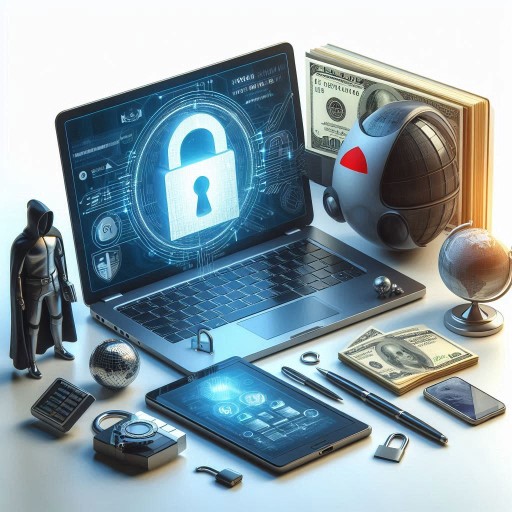TechTrend4u – In today’s digital age, cybersecurity is one of the main concerns for individuals and organizations. With the increasing reliance on technology and the internet, the risk of cyber threats is getting higher. This article provides a complete guide to cybersecurity, covering important aspects such as the latest cyber threats, online security best practices, security tools and software, and how to protect your data on the cloud and smart devices.

Latest Cyber Threats: Protect Yourself from Cyber Attacks
Cyber threats evolve along with technological advancements. Some of the most commonly encountered threats include phishing, malware, DDoS attacks and ransomware attacks. Phishing is a technique hackers use to steal sensitive information by tricking victims into volunteering their data, usually through legitimate-looking emails. Malware, on the other hand, is malicious software that can damage systems or steal data.
Implementation Example: Recently, many companies fell victim to ransomware attacks where their data was encrypted and hackers demanded a ransom to restore access. One famous case is the WannaCry attack that occurred in 2017, which affected more than 200,000 computers worldwide.
Read more: Latest Cyber Threats: Protect Yourself from Cyber Attacks
Online Security Best Practices: Keep Your Data Private
To protect yourself from cyber threats, it’s important to implement online security best practices. Here are some steps you can take:
1. Use strong and unique passwords
Make sure each account has a different password that is difficult to guess. Use a combination of uppercase, lowercase letters, numbers and symbols.
2. Enable two-factor authentication (2FA)
With 2FA, you add an extra layer of security by requiring a verification code to be sent to your device in addition to your password.
3. Avoid clicking on suspicious links
Phishing often occurs through legitimate-looking emails or text messages. Be sure to check the origin of the email and never click on links or download attachments from unknown sources.
4. Update software regularly
Many cyberattacks take advantage of vulnerabilities in outdated software. Make sure all your devices are up-to-date with the latest versions.
Read more: Online Security Best Practices: Keep Your Data Private
Security Tools and Software: Choose the Right One for You
Choosing the right security software is an important step in protecting your data. Here are some types of security tools that can be used:
- Antivirus and Antimalware: This software helps detect and remove malware present on your system. Popular examples include Norton, McAfee, and Bitdefender.
- Firewall: Firewalls serve to monitor and control incoming and outgoing network traffic based on predefined security rules. Windows Firewall is a commonly used example.
- VPN (Virtual Private Network): VPNs encrypt your internet connection, making it more difficult for hackers to monitor or access your online activity. NordVPN and ExpressVPN are two popular VPN providers.
- Password Manager: This tool helps you securely store and manage strong passwords for various accounts. LastPass and 1Password are examples of reliable password managers.
Read more: Security Tools and Software: Choose the Right One for You
IoT Security: Protect Your Smart Devices
The Internet of Things (IoT) includes a variety of smart devices connected to the internet, such as security cameras, smart thermostats, and other household devices. While these devices provide convenience, they are also vulnerable to cyberattacks if not properly protected.
Implementation Example: In a high-profile incident, an internet-connected security camera was hacked, and the attacker managed to gain access to private video footage. To protect your IoT devices, be sure to change default passwords, update device firmware regularly, and use a secure network.
Read more: IoT Security: Protect Your Smart Devices
Data Privacy: Your Right to Be Protected
Data privacy is a fundamental right that must be protected in the digital age. Personal data, such as names, addresses, phone numbers, and financial information, are often prime targets for hackers. Therefore, it is crucial to understand how your data is used and protected.
Implementation Example: The GDPR policy in Europe is one of the regulations designed to protect the privacy of user data. GDPR gives users more control over their data and requires companies to adhere to strict standards for personal data management.
Read more: Data Privacy: Your Rights to Protect
Cloud Security: Protect Your Data in the Cloud
Cloud storage has become a popular choice for storing data due to its ease of access and reliability. However, data security in the cloud should be a top priority.
Implementation Example: Dropbox and Google Drive are two widely used cloud services. To protect your data in the cloud, make sure to use end-to-end encryption, which ensures that only you can access your data. Also, enable two-factor authentication to add an extra layer of security.
Read more: Cloud Security: Protect Your Data in the Cloud
Ransomware: Preventing and Countering Attacks
Ransomware is a type of malware that encrypts a victim’s data and demands a ransom to restore access. Prevention is the best measure to protect yourself from ransomware.
Implementation Example: One way to prevent ransomware is to regularly back up your important data. In the event of a ransomware attack, having a backup of your data means you don’t have to pay the ransom because you can restore your data from the backup. Also, avoid downloading attachments or software from untrusted sources, and keep your antivirus up to date.
Read more: Ransomware: Preventing and Countering Attacks
Mobile App Security: Protect Your Smartphone
Mobile apps are an important part of our daily lives, but they can also be an entry point for cyber threats. To protect your smartphone:
- Download apps only from trusted sources: Such as Google Play Store or Apple App Store.
- Check the app permissions: Some apps ask for permissions that are not required to function, such as access to contacts or camera. Only grant the permissions required for a particular app.
- Use screen lock and encryption: A screen lock with a PIN, pattern, or fingerprint can prevent unauthorized access, while encryption helps protect the data on your device.
Read more: Mobile App Security: Protect Your Smartphone
Conclusion
Cybersecurity is everyone’s responsibility in the digital age. By understanding the latest threats, implementing best practices, and using the right tools, you can protect yourself and your data from various types of cyberattacks. Remember that cybersecurity is not a one-time task, but an ongoing effort to keep your data and privacy safe. Whether it’s protecting IoT devices, data in the cloud, or mobile apps, the right security measures will help you navigate the digital world more safely and confidently.



